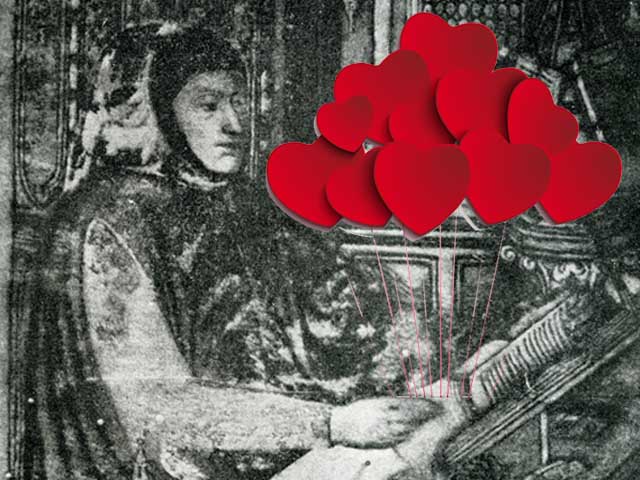
The only love that lasts is unrequited love.
You’ve heard of Heathcliff and Cathy. You already know the stories of Scarlett O’Hara and Ashley Wilkes, as well as Dante and Beatrice. You may also be familiar with Charlie Brown’s love for the Little-Red-Haired Girl. But, are you familiar with the story of Laura and Petrarca — also known as Petrarch?

Their story, much like the others, is a story of unrequited love. Of love found, but never directly expressed. It is the kind of love that brings unspeakable joy and unendurable desires to the person loving so profoundly, and at the same time heartbreaking anguish and sorrow because it is impossible to reconcile the two.
How to deal with the burden of love
impossible to obtain?
Why art, of course!
Poets and artists, suffering from this condition, turn to write, and painting to assuage and express their passionate emotions. It is a cathartic process, as well as a way to create a “safe” emotional bond with their beloved as well as a “stage” upon which they can freely talk about their complicated emotions. In the case of Petrarca, he literally wrote the book on infatuation, penning more than 300 Italian sonnets dedicated to his object of passion “Laura.” His verses soon gave rise to a whole generation of imitators all over Europe, particularly in England, where his romantic poems inspired the great love-sonnet cycles of William Shakespeare, Sir Philip Sidney, and Edmund Spenser.
The man who began the Italian
Renaissance was a love-sick fool!

Born in Arezzo, Italy in 1304, Petrarca after rejecting a career as a lawyer, turned instead to writing and humanist studies. After having rediscovered Cicero’s letters and translated them, he is credited with initiating the 14th-century Italian Renaissance. To put his life in context, Dante was a friend of Petrarca’s father and Boccaccio was a close personal friend. In a time when most individuals never left their homes, Petrarca traveled widely in Europe, and because he traveled for pleasure, he is considered the first tourist.

Petrach’s Laura
Who was this Laura and where
di Petrarca meet her?
It is documented that Petrarca first caught sight of Laura, on April 6, 1327 in the church of Sainte-Claire d’Avignon, after Easter Mass. The true identity of Laura is not certain, as Petrarca never mentions her last name. He only describes here as: lovely to look at, fair-haired, modest, and dignified in bearing. It is surmised the mysterious Laura, was the wife of the Count Hugues de Sade (an ancestor of the Marquis de Sade). If indeed the object of Petrarch’s affections is Laura de Sade — the woman was married at the age of 15, and by the time Petrarca saw her, was already a wife and mother of several children.

Regardless, Petrarca would be haunted by her beauty for the rest of his life, despite her passing away at the age of 38 in the year 1348, on April 6th, Good Friday, exactly 21 years to the very hour Petrarca first saw her. There are no records as to the cause of Laura’s death, but it was most likely due to the plague or possibly pulmonary tuberculosis resulting from eleven childbirths.

Ah, to love so deeply and so intensely! For some it could be a curse driving them to despair. But, Petrarca, instead of pining away and sinking into oblivion, tortured by an unobtainable woman, turned his passionate feelings into a gift for all eternity to enjoy. He wrote the Canzoniere — love songs to Laura and now Petrarch’s love for one very special woman lives on through his sonnets, and the two of them never united in their own time — live together forever in art, in the stanzas of his poems.
To read this post in Italian & English click on over to the Studentessa Matta Blog. Let me be your guide to Italy, and Italian Language Immersion!
Love sonnet to Laura
When Love within her lovely face appears now and again among the other ladies, as much as each is less lovely than she the more my wish I love within me grows.
I bless the place, the time and hour of the day that my eyes aimed their sights at such a height, and say: ‘My soul, you must be very grateful
that you were found worthy of such great honor.
From her to you comes loving thought that leads, as long as you pursue, to the highest good, esteeming little what all men desire;
there comes from her all joyous honesty that leads you by the straight path up to Heaven – already I fly high upon my hope.






